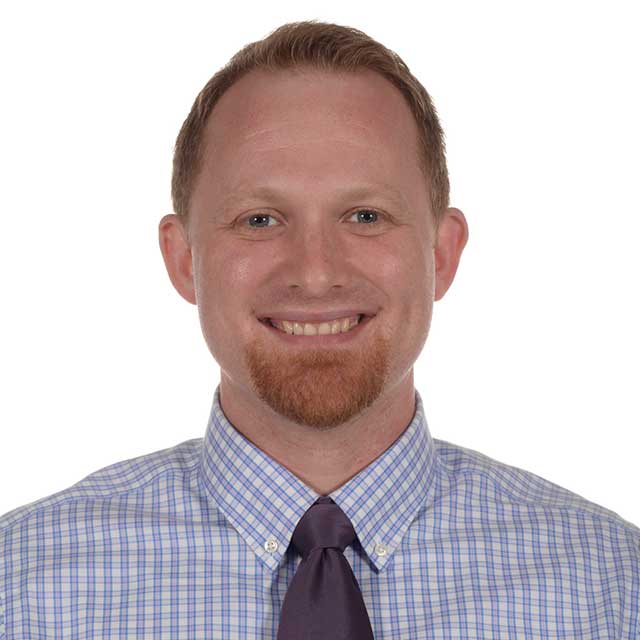Interview with a Physician-Scientist
James Cronk is a Pediatric Hematology and Oncology Fellow
 James Cronk, M.D., Ph.D.
James Cronk, M.D., Ph.D.What drew you to the field of pediatric hematology/oncology?
I first discovered my love of neuroimmunology during my graduate studies in the lab of Jonathan Kipnis at the University of Virginia (he has since moved to Washington University in St. Louis). I primarily studied engraftment of peripheral-derived macrophages into the brain, and developed a fascination with the complex biology and function of tissue resident macrophages as regulators of tissue homeostasis and first responders to disease and injury. When I finished my Ph.D. and returned to medical school, my dream career was to develop macrophage-based immunotherapies. Pediatric hematology/oncology was an obvious fit for my scientific and clinical interests, and my experience as a fellow has only solidified that decision. Pediatric hematology/oncology is a field at the forefront of immunotherapies. From the numerous antibody-based therapies now available to CAR-T cells, HSCT, and the many cellular therapies in the research pipeline, it was clear this was a field where I would be able to apply my love of immunology to the mission of helping patients in need.
What does being a physician-scientist mean to you?
Physician-scientists have a unique combination of training and experience, which gives the insight and understanding to allow for the application of basic science and preclinical research to real patients. I see the role as a bridge, ideally acting as translational researchers who are perfectly poised to make that “final leap” from bench to bedside.
How did you choose Johns Hopkins for your training?
Many factors played into my decision to train at Johns Hopkins. The research opportunities at Johns Hopkins were hard to beat, especially because I was planning to go into pediatric hematology/oncology, which is a joint program between Johns Hopkins and the National Institutes of Health (NIH). This meant I would have access to research facilities and mentors at both institutions. The pediatric residency was attractive because of the focus on resident education and the clear commitment of the residency leadership to developing research tracks within the residency. Finally, it was very important to my wife and me that we move where we could afford a home with enough space for our growing family. The other training programs I was considering would not have offered this unique combination of career opportunity, affordability and lifestyle.
Describe your current area of research and how you think this can improve the care of pediatric patients with cancer.
I am working in the lab of Rosie Kaplan, head of the Tumor Microenvironment section of the Pediatric Oncology Branch within the National Cancer Institute at NIH. My focus is on development of myeloid-cell based immunotherapies for the treatment of brain tumors. My focus is on high grade gliomas, which have extremely poor prognoses across age groups and for which novel therapies are desperately needed. The Kaplan lab has developed a new technology, genetically engineered myeloid cells (GEMy), which have been shown to induce anti-tumor immune responses in preclinical models of rhabdomyosarcoma. I am working to develop GEMy therapies for the treatment of high grade gliomas. Our goal is to use GEMys to infiltrate central nervous system tumors and induce anti-tumor responses, directly attack tumor cells and impede tumor progression. If successful, this could represent a novel therapy for central nervous system tumors that is potentially inducible, site-specific, targeted, easily modified and individualized to the patient.
Who do you consider your most important professional role models and why?
I have been fortunate to have excellent mentors during my training. My Ph.D. mentor, Jonathan Kipnis, was absolutely instrumental in developing me as a scientist and fueling my passion for neuroimmunology. During my time in his lab, he taught me a tremendous amount about how to run a successful lab and push the envelope of cutting edge science. Since coming to Johns Hopkins and NIH, I have continued to be exposed to phenomenal mentors. Nicole Shilkofski, our residency director, was an outstanding advocate and resource for me as I navigated residency and my decisions surrounding fellowship. Don Small, head of the Division of Pediatric Oncology at Johns Hopkins, is someone I consider to be a role model for how to successfully be a physician-scientist; he has been very active clinically throughout his career while also making critical discoveries in leukemia, which have now become cornerstone therapies. Rosie Kaplan, my fellowship research mentor, is similarly an example of someone who embodies the physician-scientist role, seeing patients in her clinical trials at the NIH while running a very successful lab with research that is directly translated into clinical trials.
Which current scientific innovation to you find most exciting?
I am very excited about the increasing ease of genetic sequencing, which is allowing us to identify unique mutations within each patient’s malignancy and thereby develop individualized, targeted therapies. It has been amazing to care for patients as this technology comes into the forefront. As an example, I have patients for whom we have been able to choose targeted kinase inhibitors based on the discovery of known activating mutations on their genetic screen. As an immunologist, I am very interested to apply this technology to the development of individualized immunotherapies.
What’s your favorite thing to do in Baltimore?
My wife and I have two young children, so for us the abundance of family-friendly activities has been fantastic. We regularly take our kids to the aquarium, zoo, science center, playgrounds, and to the numerous farms just north of the city, which have lots of fun activities for the kids all year round.
